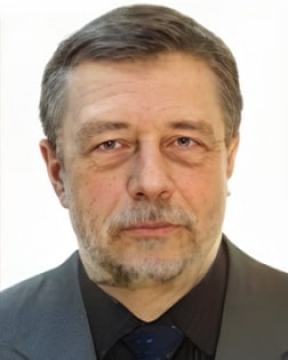 |
Prof. Vladimir Valentinovich EgorovNRC “Kurchatov Institute”Bioimaging And Photodynamic Therapy: Egorov Nano-resonance In The Two-photon Absorption 3rd Intl. Symp. on Technological Innovations in Medicine for Sustainable Development Back to Plenary Lectures » |
Abstract:In medical practice, a high optical resolution of medical devices used to visualize cancerous tumors [1] and cells [2] and in photodynamic therapy [3,4] is an extremely important factor. High resolution is determined by the small width of the corresponding optical bands, which, in turn, is determined by the rational use of physical phenomena on which the creation of medical devices is based. The ideal physical phenomena here would be any optical resonances that have a small width and high intensity. Such a resonance is the Egorov nano-resonance [5‒8]. Egorov’s nano-resonance is one of the important consequences of the new physical theory — quantum ‒classical mechanics [5,6,9,10]. As is known, in standard quantum mechanics, a certain statistical characteristic of a microparticle (wave function) obeys a certain dynamic equation (Schrӧdinger’s equation). This statistical characteristic is an innate property of an individual microparticle. In quantum‒classical mechanics, in addition to this innate statistical characteristic of an individual microparticle, innate chaos appears in the interaction of microparticles. This chaos is called dozy chaos. In quantum mechanics, molecular (electron‒phonon) transitions are singular, and they are damped by dozy chaos in quantum‒classical mechanics [10]. Dozy chaos is present only in the transient state of electron‒phonon transitions, and it can be neglected in the initial and final adiabatic states of the transitions. Egorov’s nano-resonance is a resonance in nano-scale molecular systems between the extended motion of an electron and the motion of reorganization of the environmental nuclei in the process of electron‒phonon transitions under conditions of weak dozy chaos [8]. Based on Egorov’s nano-resonance, the resonant nature of the change in the shape of optical absorption bands in the series of polymethine dyes, in which the length of the polymethine chain changes, as well as the narrow and intense J-band of well-known J-aggregates are explained [5‒9,11]. In the framework of quantum–classical mechanics, on the basis of Egorov nano-resonance and the law of conservation of energy, an explanation is given for the strong detuning of the resonance and the associated significant parasitic transformation of the shape of the resonant optical absorption band as a result of the transition from linear to nonlinear, two-photon absorption in polymethine dyes in solutions (in selenopyrylium-terminated polymethine dye Se-3C dissolved in chloroform) [12‒14]. Based on this explanation and model band shapes of the theoretical fit to the experimental optical bands [12], the conditions for reconstructing the resonance shape of the band for two-photon absorption and its redshift are predicted [14]. The creation of quantum–classical mechanics of nonlinear optical processes in polymethine dyes will further serve as a theoretical basis for the study of nonlinear optical processes also in more complex organic systems, which are promising for applications in three-dimensional (3D) fluorescence imaging, lasing up-conversion, optical power limitation, photodynamic therapy, 3D optical data storage and so on (see [14] and refs 57‒60 therein). |
|